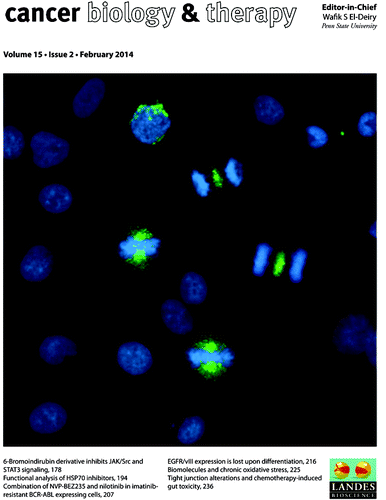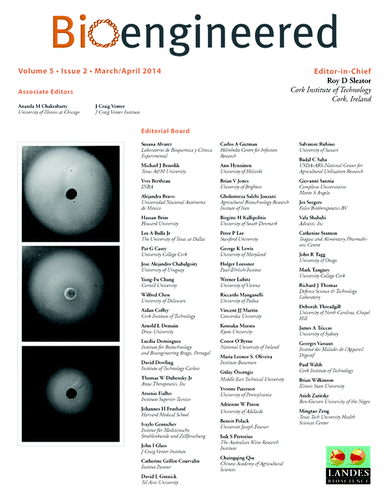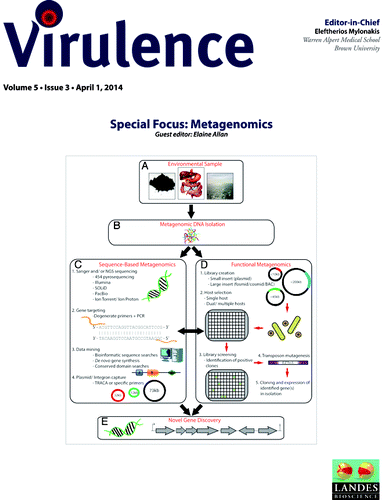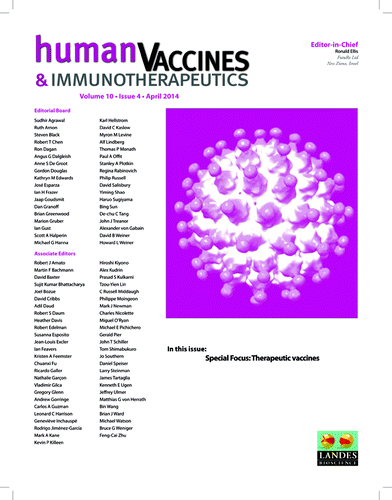Chemotherapy-induced gut toxicity
Chemotherapy for cancer causes significant gut toxicity, leading to severe clinical manifestations and an increased economic burden. Many of the underlying mechanisms of chemotherapy-induced gut toxicity (CIGT) remain poorly understood, but tight junctions have been indicated to play a role in the pathogenesis of CIGT. To learn more about the mechanisms of CIGT, a new study set out to quantify the molecular changes in key tight junction proteins (ZO-1, claudin-1, and occludin) using a well-established preclinical model of gut toxicity. Female tumor-bearing dark agouti rats received irinotecan or a placebo and were assessed for validated parameters of gut toxicity including diarrhea and weight loss. Rats were killed at 6, 24, 48, 72, 96, and 120 h post-chemotherapy. Tight junction protein and mRNA expression in the small and large intestines were assessed using semi-quantitative immunohistochemistry and RT-PCR. The authors reported significant changes in protein expression of tight junction proteins in both the jejunum and colon, correlating with key histological changes and clinical features. mRNA levels of claudin-1 were significantly decreased early after irinotecan in the small and large intestines. ZO-1 and occludin mRNA levels remained stable across the time-course of gut toxicity. The results strongly suggest that irinotecan causes tight junction defects that lead to mucosal barrier dysfunction and the development of diarrhea. Breakdown of the mucosal barrier enables noxious agents and pathogens to penetrate the epithelium. Bacteria- and proinflammatory cytokine-mediated tight junction disruption seem to be pivotal in the development of gut toxicity. Future research investigating posttranslational regulation of tight junction proteins could delineate the underlying pathophysiology of gut toxicity and help identify future therapeutic targets ().
Molecular characterization of H. pylori type IV secretion system component CagX
The gram-negative bacteria Helicobacter pylori are found in almost half of the world`s population and can cause gastric ulcer and duodenal cancer. The cag-pathogenicity island (cag-PAI), which encodes the type IV secretion system (TFSS), is an established virulence factor of H. pylori. Prevalence of gastric cancer has been shown to be higher in patients infected with cag-PAI positive H. pylori than cag-PAI negative H. pylori. The TFSS consists of a cytoplasmic and/or inner membrane ATPase, a transmembrane core-complex and outer membranous pili and associated subunits. The core complex consists of CagX, CagT, CagM, and Cag3(δ) proteins. In a recent study, Dr Gopal Jee Gopal and colleagues have looked more closely at the core-complex forming sub-unit protein CagX. To this end, the complete open reading frame (ORF) of CagX except signal peptide coding region was cloned, expressed, and purified. Polyclonal anti-sera against full-length recombinant CagX were raised in a rabbit model. These CagX anti-sera were then utilized to characterize endogenous CagX. The surface localization of CagX could be shown by immunofluorescence microscopy. This is the first report of a full-length CagX being characterized. The authors could show that CagX is part of a high molecular weight core complex, which is important for assembly and function of the H. pylori virulence factor TFSS ().
Metagenomics to understand the human microbiome in health and disease
The term microbiome refers to the genetic material of the catalog of microbial taxa associated with humans. As in all ecosystems, the microbiota reaches a dynamic equilibrium in the human body, which can be altered by environmental factors and external stimuli. Metagenomics is a relatively new field of study of microbial genomes within diverse environmental samples, which is of increasing importance in microbiology. The introduction of this ecological perception of microbiology is the key to achieving real knowledge about the influence of the microbiota in human health and disease. A recent review by Dr Bermúdez-Humarán and colleagues focuses on the link between the human microbiota and health from this ecological point of view, highlighting the contribution of metagenomics in advancing this field. Examples from the intestinal, vaginal, skin, and airway microbiome are presented. The authors emphasize the need to study the human microbiome as a whole ecosystem to better understand the relation between microbiota and host health or disease ().
Effectiveness of Hepatitis A vaccination
Hepatits A is an acute infectious disease of the liver caused by the hepatitis A virus (HAV). Usually it is spread by eating or drinking contaminated food or water. Vaccination is an effective strategy to prevent and control the transmission of hepatitis A. In China, national hepatitis A immunization programs were launched in the late 1990s. A recent study has evaluated the effectiveness of strategies in the prevention and control of hepatitis A in the city of Tianjin, a coastal city near Beijing. Tianjin has an urban population of over 14 million, making it the fourth largest city in China. A hepatitis A immunization program has been in place in Tianjin since 2001. A Chinese team of researchers, led by Wei-ming Fu, analyzed data of a serological survey, annual hepatitis A incidence, immunization coverage, and the positive rate of hepatitis A IgG before and after the immunization program in residents under 15 years of age. They found that the hepatitis A vaccine induces a striking decrease of hepatitis A incidence and a significant increase in the positive rate of anti-HAV IgG among children under 15 years of age. Hepatitis A vaccination in children was proved to be effective in the prevention and control of hepatitis A in Tianjin, China ().
References
- Wardill HR, Bowen JM, Al-Dasooqi N, Sultani M, Bateman E, Stansborough R, Shirren J, Gibson RJ. Irinotecan disrupts tight junction proteins within the gut : implications for chemotherapy-induced gut toxicity. Cancer Biol Ther 2014; 15:236 - 44; http://dx.doi.org/10.4161/cbt.27222; PMID: 24316664
References
- Gopal GJ, Kumar A, Pal J, Mukhopadhyay G. Molecular characterization and polyclonal antibody generation against core component CagX protein of Helicobacter pylori type IV secretion system. Bioengineered 2014; 5; http://dx.doi.org/10.4161/bioe.28070; PMID: 24637488
References
- Martín R, Miquel S, Langella P, Luis G. Bermúdez-Humarán. The role of metagenomics in understanding the human microbiome in health and disease. Virulence 2014; 5:1 - 5; http://dx.doi.org/10.4161/viru.27864; PMID: 24153016
References
- Zhang ZL, Zhu XJ, Shan AL, Gao ZG, Zhang Y, Ding YX, Liu H, Wu WS, Liu Y, He HY, et al. Effectiveness of 10-year vaccination (2001-2010) on Hepatitis A in Tianjin, China. Hum Vaccin Immunother 2014; 10:1 - 4; http://dx.doi.org/10.4161/hv.27775; PMID: 24503599




